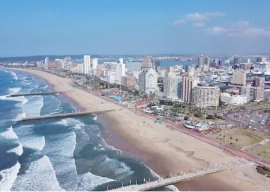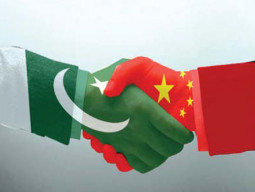
The World Bank projects that remittances to developing countries will grow by 7.9%, 10.1% and 10.7% in 2013, 2014 and 2015 respectively, to reach $534 billion in 2015.
While the international economic downturn has adversely affected remittance flows to Europe and some other regions, South Asia is expected to fare much better than previously estimated, the report says. Remittance flows to South Asia are expected to clock in at around $109 billion in 2012, up by 12.5% over 2011, it said.
According to the State Bank of Pakistan (SBP), the country received remittances of $13.2 billion in fiscal 2012, which were 17.7% higher than the preceding fiscal year.
Similarly, in the first four months of the current fiscal year, remittances to Pakistan stood at $4.9 billion, higher by 15% compared to remittances received in the corresponding four-month period last fiscal year.
“Regions and countries with large numbers of migrants in oil-exporting countries continue to see robust growth in inward remittance flows, compared with those whose migrant workers are largely concentrated in the advanced economies, especially Western Europe,” the World Bank report says.
According to the Bureau of Emigration’s Assistant Director Farrukh Jamal, more than 80% of the manpower that Pakistan has exported resides in Saudi Arabia. “Almost 90% of recent emigrants from Pakistan currently work in the Middle East,” he told The Express Tribune in an interview two weeks ago.

The largest single-country chunk of remittances that Pakistan received in fiscal 2012 – amounting to $1.1 billion – was from Saudi Arabia. It was followed closely by the United Arab Emirates (UAE), with $963.1 million remitted from the country in the same period. The United States ($795.3 million) was the third biggest source of remittances during fiscal 2012.
Cost of remittances
The World Bank report says the high cost of sending money home is an “obstacle to growth of remittance flows.” It averaged 7.5% in the third quarter of calendar year 2012 for the top 20 bilateral remittance corridors, and 9% for all other countries for which cost data were available, it says.
Interestingly, the two most important bilateral remittance corridors for Pakistan – UAE-Pakistan and Saudi Arabia-Pakistan – are among the “five least costly corridors” in the world, according to World Bank’s Remittances Prices Worldwide project.
For example, sending $200 from the UAE to Pakistan costs $4.9, which translates into 2.4% and includes the transaction fee and exchange rate margin. Similarly, transferring the same amount from Saudi Arabia to Pakistan costs $5.6, or 2.8% of the remitted amount.
On the other hand, the World Bank says, the Singapore-Pakistan remittance corridor is among the “five most costly corridors” in the world: it costs almost $57 to transfer $500 from Singapore to Pakistan, which comes around 11.4% of the remitted amount.
Workers’ remittances and compensation of employees for Pakistan – which comprise current transfers by migrant workers and wages and salaries earned by non-resident workers – were 5.5% of the country’s gross domestic product in 2010, the latest year for which the relevant data is available on the World Bank’s website.
Published in The Express Tribune, November 27th, 2012.


















COMMENTS
Comments are moderated and generally will be posted if they are on-topic and not abusive.
For more information, please see our Comments FAQ